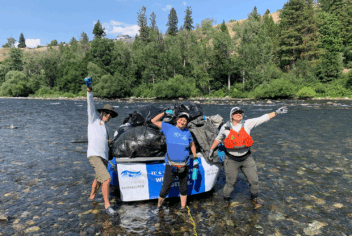While most of us will never experience an active shooter emergency, the number of incidents is on the rise.
Given this fact, and the seriousness of these events when they happen, it’s important to be attentive to both education and prevention.
According to the U.S. Department of Homeland Security, an active shooter is an individual actively engaged in killing or attempting to kill people in a confined and populated area. In most cases, active shooters use firearm(s), and there is no pattern or method to their selection of victims.
There is not one, single profile of an active shooter. Personality traits do not follow any set pattern, vary widely, and are usually too general to be useful. According to the Department of Homeland Security, many active shooters follow a violence pattern that begins with negative situations, moves to intense negative feelings and the idea that violence is the right way, followed by planning the violent incident.
Some workplace shooters are trying to right a perceived wrong, such as a conflict on the job or termination, and may have a specific target. Many others have no specific target, but may have an ideological goal.
Perpetrators are relatives in 40% of female workplace homicides, while only 2% of perpetrators against males were relatives.
Active shooter incidents are often unpredictable and evolve quickly.
Recognizing potential threats and reacting as quickly as possible cannot be emphasized enough.
Many survivors of active shooter incidents have said that they heard noises, but weren’t sure they were gunshots. Every second counts.
An active shooter situation will put you under extreme stress, so much so that your ability to think straight and make good decisions may be impaired.
It is important that you have trained, practiced, and mentally rehearsed what you will do in this type of emergency, so you can react without hesitation.
The City of Houston Mayor’s Office of Public Safety, with funding from the U.S. Department of Homeland Security, produced the Run, Hide, Fight video. This is an excellent free resource for training your employees and volunteers and has quickly gained traction as a national standard for active shooter protocol.
Be sure that active shooter training is part of your workplace violence program.
While the majority of all incidents from 2000-2013 occurred in an environment related to commerce, you should be sure that active shooter training is part of your workplace violence program.
An effective response plan should include procedures to respond to mass casualty threats, such as active shooters, by developing evacuation or sheltering plans that are appropriate and feasible for the facility, a procedure for warning individuals of the situation, and a procedure for contacting the appropriate law enforcement agency.
In your training, encourage individuals to consider the environment in which they work and identify two possible escape routes.
If possible, identify a secure location in your facilities where individuals could take cover and hide. Hiding in a secure location has been extremely effective in active shooter situations. The shooter knows there is limited time before law enforcement arrives and will typically move on from locked doors rather than use that time to attempt to force entry.
Do not assume that someone else has called 911.
In an active shooter situation, do not assume that someone else has called 911. Call if you can do so without slowing down your exit or revealing your hiding place.
When calling, be prepared with your exact location (address, floor you are on, section of building, etc.).
If you have the information, provide the number of shooters, including a description of the individual(s) and any weapons, their current location, and if there are any victims.
It is important to note that even when law enforcement arrives, the danger is not over.
The responsibility of the first officers on the scene is to stop the shooter before they do anything else. Officers will be under stress and prepared to use deadly force.
If an officer sees you, they will look at your hands for a threat, so put your hands up, spread your fingers, show them your palms and stay very still.
The U.S. Department of Homeland Security (DHS) aims to enhance preparedness through a “whole community” approach by providing products, tools, and resources to help you prepare for and respond to an active shooter incident.
Visit their website to access the many resources available to help your nonprofit with this important area of emergency preparedness.





